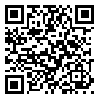BibTeX | RIS | EndNote | Medlars | ProCite | Reference Manager | RefWorks
Send citation to:
URL: http://sjsph.tums.ac.ir/article-1-33-en.html

 , Mahmoud Jalali *
, Mahmoud Jalali * 
 1, Ahmad Saedi
1, Ahmad Saedi 
 , Abolghasem Jazayeri
, Abolghasem Jazayeri 
 , Abbas Rahimi
, Abbas Rahimi 
 , Seyed mohammad Hashemi
, Seyed mohammad Hashemi 

Background and Aim: Vitamin D deficiency is highly prevalent in Asia, including the Middle East. Vitamin D deficiency has been found to have an inverse relationship with occurrence of type-2 diabetes mellitus (DM). In this study we assessed the vitamin D and calcium status in type-2 diabetic patients and compared it with that of healthy subjects in Tehran, Iran.
Materials and Methods: This cross-sectional study included 180 Tehrani individuals, including 95 DM patients, selected randomly from among the members of Iranian Diabetes Association, and 85 healthy subjects in Tehran, Iran. Age and gender were adjusted between the two groups. Serum levels of 25(OH)-vitamin D, calcium, phosphorous, and Parathormone (PTH), as well as weight, height and body mass index (BMI) were measured.
Results: The mean and SD age and BMI of the diabetic patients were 51.26 ± 11.18 years and 26.22 ± 9.30 kg/m2, respectively the corresponding figures for the healthy subjects were 51.55 ± 13.39 and 26.26 ± 4.55. The prevalence of calcium deficiency was close in the 2 groups, it being 55.8% in the diabetic, and 57.0% in the healthy, subjects. The data also showed that while 26.3% of the patients suffered from a poor vitamin D status, only 18.6% of the healthy subjects had this problem.
Conclusion: Vitamin D deficiency is highly prevalent among both type-2 diabetic and healthy subjects and should be considered a public health and nutritional problem in Tehran city, Iran.
Received: 2011/03/9 | Accepted: 2011/08/16 | Published: 2013/08/9
| Rights and permissions | |
 |
This work is licensed under a Creative Commons Attribution-NonCommercial 4.0 International License. |



